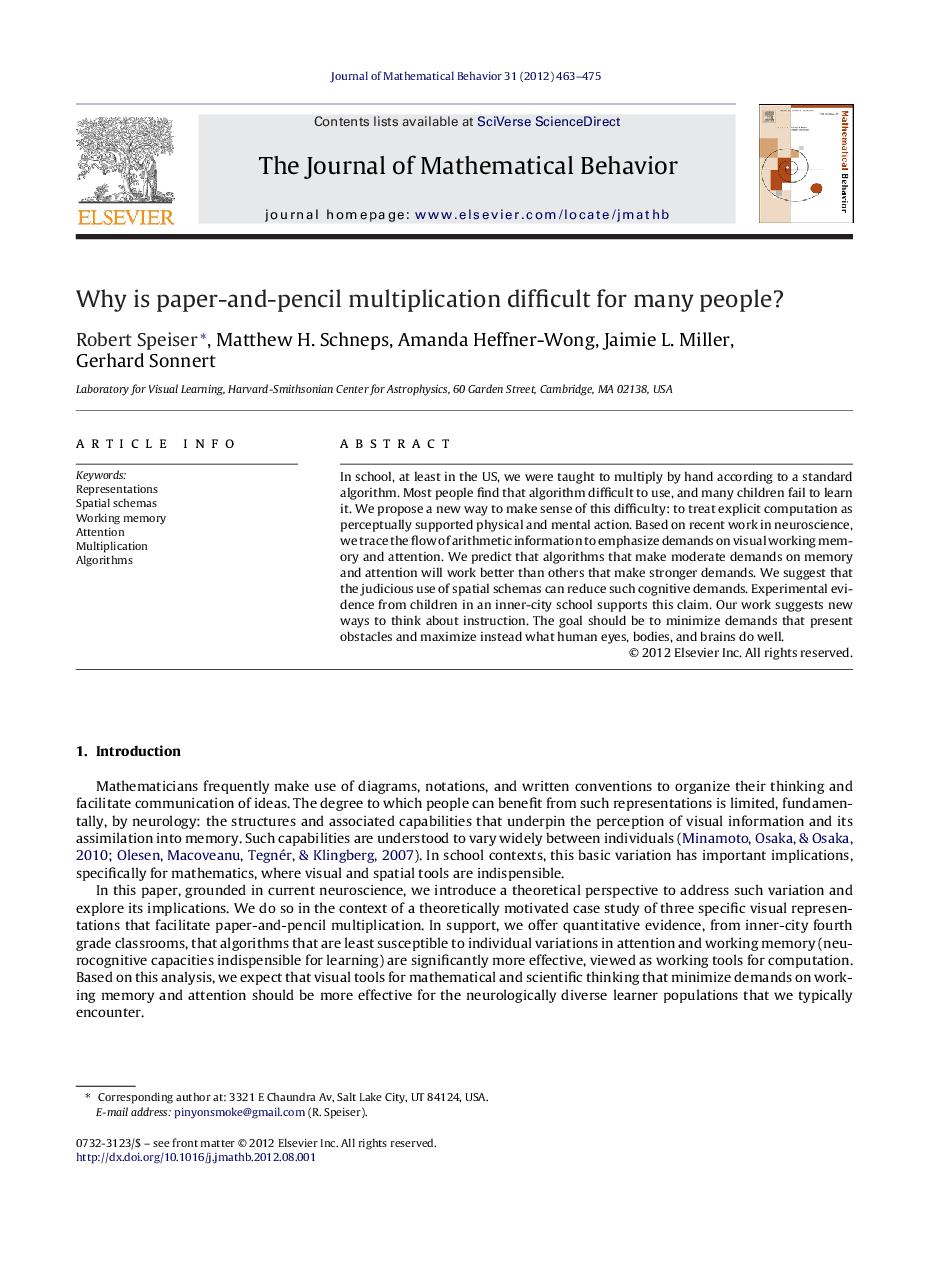| Article ID | Journal | Published Year | Pages | File Type |
|---|---|---|---|---|
| 360848 | The Journal of Mathematical Behavior | 2012 | 13 Pages |
In school, at least in the US, we were taught to multiply by hand according to a standard algorithm. Most people find that algorithm difficult to use, and many children fail to learn it. We propose a new way to make sense of this difficulty: to treat explicit computation as perceptually supported physical and mental action. Based on recent work in neuroscience, we trace the flow of arithmetic information to emphasize demands on visual working memory and attention. We predict that algorithms that make moderate demands on memory and attention will work better than others that make stronger demands. We suggest that the judicious use of spatial schemas can reduce such cognitive demands. Experimental evidence from children in an inner-city school supports this claim. Our work suggests new ways to think about instruction. The goal should be to minimize demands that present obstacles and maximize instead what human eyes, bodies, and brains do well.
► The standard multiplication algorithm is difficult to use. Many children fail to learn it. Why? ► We view explicit computation as perceptually supported action. ► Any method that loads working memory and attention heavily will tend to fail. ► We offer strong experimental evidence, from children in an inner city school. ► Our analysis suggests new ways to think about instruction and curricula.
